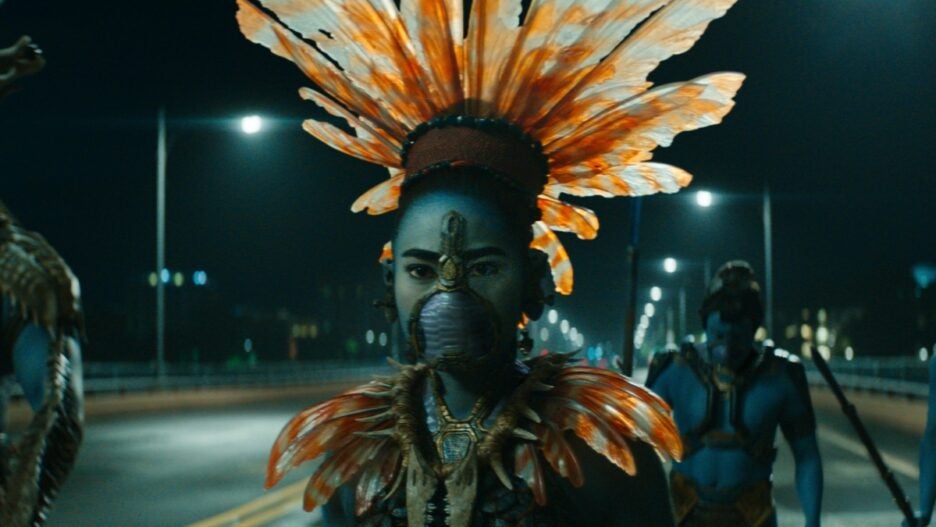Community, Leadership, Experimentation, Diversity, & Education
Pittsburgh Arts, Regional Theatre, New Work, Producing, Copyright, Labor Unions,
New Products, Coping Skills, J-O-Bs...
Theatre industry news, University & School of Drama Announcements, plus occasional course support for
Carnegie Mellon School of Drama Faculty, Staff, Students, and Alumni.
CMU School of Drama
Wednesday, November 23, 2022
‘Black Panther 2’ Used Mayan Culture — and Shark Bones — to Design Talokan’s Warriors
www.thewrap.com: After winning an Oscar for the rich, pan-African designs she created for the people of Wakanda in “Black Panther,” costume designer Ruth Carter faced a new challenge for the sequel “Wakanda Forever”: the immortal aquatic warriors of Talokan.
Subscribe to:
Post Comments (Atom)

3 comments:
I think a lot of the details did translate from the screen. I remember being impressed at the attention to detail when I watched the movie on its opening detail. It was extremely well crafted and I could tell the designers had done their research before producing any pieces. I’m sure I missed a lot of things still, but it did matter a lot seeing Mayan culture represented with such care in a massive block-buster movie. I think that lack of caring about doing the research prevents writers and designers from producing something that can be detailed and intimate. Making that short cut of skipping the research stage is not going to create a better product, it’s not going to make your process more efficient or quell your creative solutions to come through. If anything it just hingers what can be produced and what the overall feel is for it.
While watching this movie I could not stop looking at the costumes. From the start of this movie, I was captured by these characters and the way that they looked - every single thing that they were wearing looked so beautiful and real. The funeral scene took place at the start of the movie and with everyone wearing all white, but in different variations I was amazed, although the costumes were all white you could clearly see one's personality depicted through what it is that they were wearing, not the color. All of the characters in Talokan were dressed beautifully, the research that was put into the cultures that this city was based off of truly paid off. And this city was underwater, which brought in a whole new element such as the shells and fish bones. Because these individuals lived underwater, they had to wear masks over their mouths that were filled with water – these masks in the movie were not opaque, so you could see the water “moving” as they did, yet the masks were still flexible and moved when they spoke. Overall, I was more visually interested in every aspect of this movie, especially the costumes, than the plot of this film.
One of my favorite parts of that design is getting to do all of the research prior to sitting down and developing my desires. I wish that this article could’ve showed us some of the examples that they were talking about in images or videos of the types of Mayen influences That Ruth decided to incorporate. With films like this, I think it’s really interesting how they do you have to create such a world Bible, Amos of everything that they are establishing throughout this film through everything from scenery to costumes to props to script itself in order to keep it consistent and one fluid storyline. This is incorrect and wonderful and I hope to my work. Ruth Carter is always been an inspiration to me just how thorough she is before work and how she really does cretin Tilde world to her costume design, establishing the trend center distinction of classes and distinction of age through what they’re wearing is phenomenal.
Post a Comment